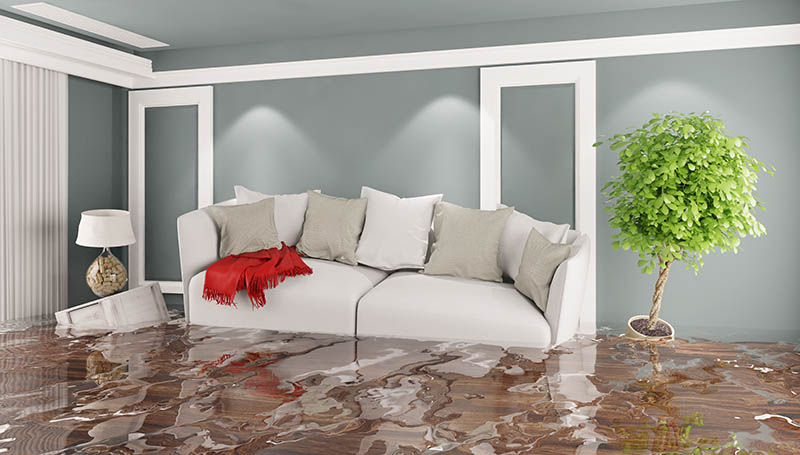Exploring the Primary Causes for Water Leaks in The Home
Exploring the Primary Causes for Water Leaks in The Home
Blog Article
We've come across this post relating to How to detect water leaks in your home down the page on the web and reckoned it made perfect sense to relate it with you on this site.

Leakages not just cause waste of water but can likewise trigger unneeded damages to your home and promote unwanted organic growth. Water leaks may go unnoticed since most of the pipework in our home is concealed. By looking as well as understanding for everyday scenarios that trigger leaks, you can protect your residence from future leakages as well as unnecessary damages. Today, we will look at 6 leak creates that might be causing your pipelines to drip.
Instant temperature modifications.
Extreme temperature adjustments in our pipelines can trigger them to expand as well as contract unexpectedly. This development as well as contraction might cause splits in the pipelines, especially if the temperature level are listed below cold.
Rusty water systems
As time goes by, your plumbing system ages and rust such as corrosion might start gnawing the pipes. This might be the source of discoloration or bending on your water pipes. This asks for an inspection with your plumber immediately. If our plumbing system is old, take into consideration replacing the pipelines since they go to a higher danger of deterioration than the newer designs.
Defective Pipe Joints
The point at which your pipes link is often the weakest link in the waterline. Pipe joints can weaken gradually, leading to water leaks. The majority of pipeline joints are not quickly visible. If you have loud pipes that make ticking or banging sounds, specifically when the warm water is turned on, your pipe joints are probably under a great deal of pressure. It is advisable to have your plumber evaluate your system yearly.
Intruding origins
Many water leakages start outside the residence rather than inside it. You might see wet spots or sinkholes in your yard, as well as that could imply that tree origins are attacking water lines causing water to leak out.
Poor Water Connectors
At times, a leakage can be caused by loosened hoses as well as pipelines that supply your home appliances. In case of a water connections leakage, you may discover water running straight from the supply line or puddles around your home appliances.
Clogged Drains
Clogged drains pipes might be annoying and also inconveniencing, yet they can sometimes wind up causing an overflow leading to break pipelines. Keep eliminating any materials that might go down your drains pipes that could block them to avoid such troubles.
All the above are reasons for leaks yet not all water leaks result from plumbing leaks; some leakages could originate from roofing system leaks. All leaks must be fixed instantly to prevent water damage.
Leaks not only trigger waste of water however can likewise trigger unneeded damage to your house as well as promote unwanted organic development. By looking and also recognizing for everyday circumstances that trigger leakages, you can protect your home from future leaks and also unnecessary damages. Today, we will look at 6 leak creates that may be triggering your pipes to drip.
At times, a leakage can be caused by loosened tubes as well as pipelines that provide your devices. In case of a water links leakage, you may see water running straight from the supply line or puddles around your devices.
How To Check For Water Leak In Your Home
How To Check for Leaks
The average household's leaks can account for nearly 10,000 gallons of water wasted every year and ten percent of homes have leaks that waste 90 gallons or more per day. Common types of leaks found in the home are worn toilet flappers, dripping faucets, and other leaking valves. These types of leaks are often easy to fix, requiring only a few tools and hardware that can pay for themselves in water savings. Fixing easily corrected household water leaks can save homeowners about 10 percent on their water bills.
To check for leaks in your home, you first need to determine whether you're wasting water and then identify the source of the leak. Here are some tips for finding leaks:
Take a look at your water usage during a colder month, such as January or February. If a family of four exceeds 12,000 gallons per month, there are serious leaks.
Check your water meter before and after a two-hour period when no water is being used. If the meter changes at all, you probably have a leak.
Identify toilet leaks by placing a drop of food coloring in the toilet tank. If any color shows up in the bowl after 10 minutes, you have a leak. (Be sure to flush immediately after the experiment to avoid staining the tank.)
Examine faucet gaskets and pipe fittings for any water on the outside of the pipe to check for surface leaks.
Undetected water leaks can happen without the home or business owner even realizing. If you suspect a water leak, but not able to find the source. It is time to contact a professional water leak detection service, The Leak Doctor.
How To Find a Water Leak In Your Home
https://www.leakdoctor.com/blog/How-To-Check-For-Water-Leak-In-Your-Home_AE197.html

Do you like reading up on How Fast Water Damage Can Ruin Your Home? Make feedback down below. We will be delighted to find out your responses about this posting. We hope that you visit us again before long. Sharing is good. Helping others is fun. Thank-you for going through it.
This Resource Report this page